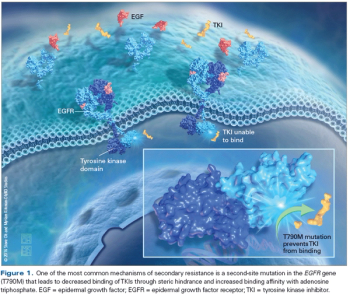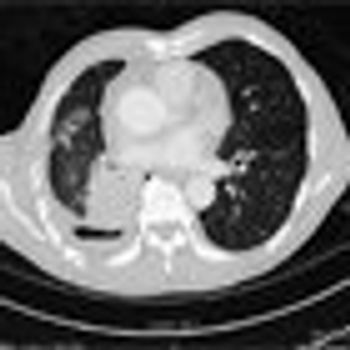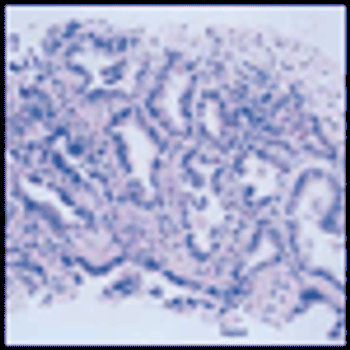
Panelists discuss how thoracic oncologists are adapting to a rapidly evolving treatment landscape for lung cancer, focusing on the integration of novel therapies and the importance of biomarker-driven approaches in patient care.

Your AI-Trained Oncology Knowledge Connection!


Panelists discuss how thoracic oncologists are adapting to a rapidly evolving treatment landscape for lung cancer, focusing on the integration of novel therapies and the importance of biomarker-driven approaches in patient care.

Panelists discuss how ongoing trials may reshape the treatment landscape for HER2-altered NSCLC, particularly regarding the roles of ADCs and TKIs in managing both HER2-mutated and HER2-overexpressing NSCLC.

Panelists discuss how ongoing trials may reshape the treatment landscape for HER2-altered NSCLC, particularly regarding the roles of ADCs and TKIs in managing both HER2-mutated and HER2-overexpressing NSCLC.

Panelists discuss how the evolving treatment landscape for HER2-overexpressing NSCLC, particularly with the introduction of trastuzumab deruxtecan, influences therapeutic strategies and decision-making based on recent clinical trial data.

Panelists discuss how the interpretation of HER2 IHC scores informs treatment decisions in NSCLC, including adherence to ASCO/CAP guidelines and strategies for managing equivocal results.

Panelists discuss how understanding the distinctions between HER2 overexpression and mutations in NSCLC influences patient care strategies and prognosis, alongside the challenges of biomarker testing methods such as IHC and NGS.

Before closing out their discussion on non–small cell lung cancer, experts share excitement for possible improvements in the setting of perioperative therapy.

Experts consider when and if it would be appropriate to utilize targeted or immunotherapy in patients with EGFR exon 19 deletion–positive NSCLC.

Shared insight on the diagnosis and management of EGFR exon 19 deletion–positive NSCLC, with regard for the potential of osimertinib in this setting.

A brief review of how treatment may be selected for a patient with NSCLC based on their PD-L1 expression and disease staging.

Expert perspectives on the IMpower010 and KEYNOTE-091 trials, which assessed adjuvant immunotherapy in non–small cell lung cancer.

Shared insight on the CheckMate-816 trial and how immunotherapy may have a role in the neoadjuvant setting of non–small cell lung cancer.

A broad discussion on the role of immunotherapy in newly diagnosed NSCLC in both the neoadjuvant and adjuvant settings.

Shared insight on a patient profile of newly diagnosed non–small cell lung cancer with high PD-L1 expression and no driver mutation.

Expert panelists look at all factors that inform treatment selection when managing a patient diagnosed with non–small cell lung cancer.

Comprehensive discussion on how biomarker testing and multidisciplinary care can improve the management of non–small cell lung cancer.

In this interview we discuss the use of liquid biopsies in lung cancer, the pros and cons compared with tissue biopsies, and how they can be used to help make treatment decisions.

In this article, we review the available literature addressing the competing treatment strategies in EGFR-Positive Lung Cancer and attempt to clarify best treatment practices, including the emerging role of T790M-directed therapies.

The NLST is a landmark trial demonstrating that implementation of low-dose CT screening lowers lung cancer–related mortality. We must put the study results and cost-effectiveness analyses in the context of the staggering statistics: up to 65% of lung cancer patients present with advanced-stage disease where treatments are often costly, toxic, and only palliative in nature.

An 81-year-old Chinese male never-smoker with a medical history of hypertension and hyperlipidemia presented with a productive cough and a 5-lb weight loss over 3 months.

Bronchioloalveolar carcinoma (BAC) is a subset of pulmonary adenocarcinoma characterized by distinct and unique pathological, molecular, radiographic, and clinical features. While the incidence of pure BAC is rare, comprising only 1% to 4% of non–small-cell lung cancer (NSCLC), mixed subtypes (including BAC with focal invasion and adenocarcinoma with BAC features) represent as much as 20% of adenocarcinomas-and that figure may be increasing. Despite the longstanding recognition of this entity, there is no established treatment paradigm for patients with multifocal BAC, resulting in competing approaches and treatment controversies. Current options for multifocal BAC include both surgery and systemic therapies. Unfortunately, prospective data on systemic approaches are limited by study design and small patient numbers; there are only seven phase II studies involving four therapies. This article evaluates key characteristics of BAC, including the current understanding of histopathology and tumor biology. In addition, it comprehensively reviews the systemic phase II studies in an attempt to clarify the therapeutic challenges in this disease. It also includes the first proposed treatment paradigm that integrates both EGFR mutational status and the sub-histologies, mucinous and nonmucinous BAC.

Published: May 13th 2022 | Updated:

Published: May 20th 2022 | Updated:

Published: November 8th 2024 | Updated:

Published: May 6th 2022 | Updated:

Published: May 13th 2022 | Updated:

Published: May 20th 2022 | Updated: